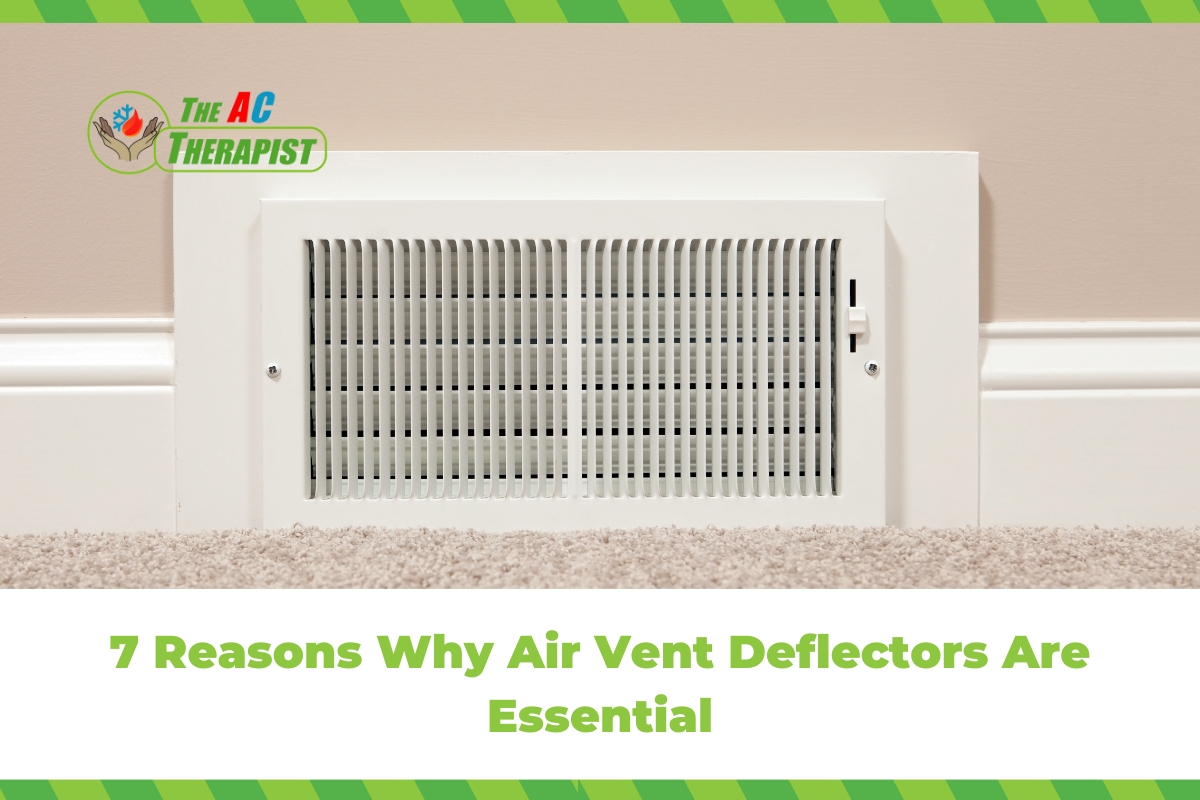7 Reasons Why Air Vent Deflectors Are Essential
Many homeowners overlook the significance of air vent deflectors, considering them mere accessories rather than essential components of an HVAC system. However, these compact and affordable items can make a remarkable difference in the efficiency and comfort levels of your home. In this comprehensive guide, we’ll dive into the nitty-gritty of what air vent deflectors are, their benefits, installation tips, and how they can be a game-changer for your HVAC system.
What Are Air Vent Deflectors?
Air vent deflectors are attachments that are placed over or into air vents and registers in the floors, walls, or ceilings of a building. Their primary function is to redirect the flow of conditioned air, whether hot or cold, to improve its distribution throughout a room or space. By doing so, they help in achieving more even heating or cooling, thereby enhancing comfort and energy efficiency. These deflectors are typically made from materials such as plastic or metal and come in various shapes and sizes to accommodate different types of vents and ductwork.
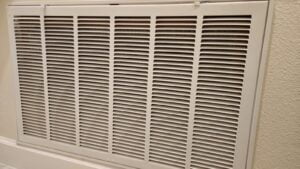
Why Use Air Vent Deflectors?
When it comes to HVAC systems, air vent deflectors are often overlooked. Many homeowners focus on high-efficiency HVAC units, smart thermostats, and regular maintenance, yet neglect this simple but effective accessory. If you’re among those who’ve never given much thought to air vent deflectors, here are seven compelling reasons why they are indispensable for an effective HVAC system.
1. Improved Air Circulation
One of the most immediate benefits of air vent deflectors is improved air circulation. Without a deflector, conditioned air often flows in a singular, concentrated direction. This can create cold or hot spots in a room, making the space feel unevenly heated or cooled. A deflector disperses air more evenly, ensuring a more balanced temperature throughout the room.
2. Enhanced Energy Efficiency
If your HVAC system doesn’t have to work as hard to maintain a comfortable temperature in each room, it will naturally consume less energy. Air vent deflectors help distribute air more evenly, reducing the load on your HVAC system and, consequently, your energy bills.
3. Increased Comfort
Nobody likes walking from a warm room into a cold one or vice versa. By helping to eliminate hot or cold spots, air vent deflectors make each room in your home more comfortable to be in.
4. Prolonged HVAC Lifespan
Less strain on your HVAC system means less wear and tear on its components. By optimizing airflow and reducing the effort your system needs to exert to heat or cool your home, air vent deflectors can extend the lifespan of your HVAC system.
5. Cost-Effectiveness
Air vent deflectors are relatively inexpensive and easy to install. Considering the benefits they offer in terms of energy efficiency and system longevity, they provide an excellent return on investment.
6. Improved Air Quality
Some air vent deflectors come equipped with filters that trap dust, allergens, and other airborne particles. This not only improves the air quality in your home but also reduces the amount of cleaning and dusting you’ll need to do.
7. Aesthetically Pleasing
Though it might seem trivial, the aesthetic component should not be ignored. Modern air vent deflectors are designed to blend seamlessly with home décor, offering a sleek and unobtrusive look. They come in various materials and finishes, so you can choose one that complements your interior design.
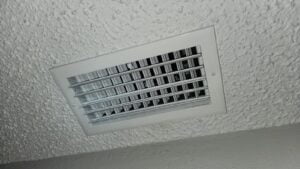
How to Choose the Right Air Vent Deflector
Choosing the right air vent deflector involves considering several factors that can influence both its effectiveness and how well it integrates into your living space. Here are some key points to keep in mind:
Material
The material used in the construction of the air vent deflector is one of the most critical factors to consider. Plastic and metal are the two most common materials.
- Plastic: This material is often cheaper and lighter. It’s also resistant to rust, which makes it a good option for areas with high humidity. However, plastic may be less durable and could degrade over time due to exposure to sunlight or extreme temperatures.
- Metal: Metal deflectors are sturdier and tend to have a longer lifespan. They are also more likely to withstand higher temperatures, making them ideal for heating systems. However, metal can rust if it’s not properly treated or maintained.
Size and Fit
Accurate measurements are crucial for the effectiveness of the air vent deflector. An ill-fitting deflector can disrupt airflow and can even become a safety risk if it falls off the vent.
- Measuring the Vent: Use a tape measure to determine the length, width, and depth of your air vent.
- Product Dimensions: Always check the dimensions listed on the deflector packaging or product description to make sure it will fit your specific vent size.
Type of Vent
Different types of vents require different kinds of deflectors. The main types of vents are:
- Floor Vents: These are common in homes with underfloor heating systems. Deflectors for floor vents often come with features to ensure they stay in place, like rubberized edges.
- Wall Vents: These vents are placed along the lower part of the wall or higher up near the ceiling. Wall vent deflectors usually attach with screws or clips.
- Ceiling Vents: These are found in commercial buildings and some modern homes. The deflector should be secure enough to withstand the force of air being pushed downwards.
Design Features
Look out for additional features that can enhance the functionality of the air vent deflector.
- Adjustable Louvers: These allow you to control the direction of airflow, which can be particularly beneficial in rooms with uneven temperatures.
- Built-in Filters: Some models come with air filters to improve indoor air quality by trapping dust and allergens.
Aesthetic Appeal
The look of the air vent deflector can also be an important consideration, especially if you are particular about your home’s interior design.
- Color: Some deflectors come in a range of colors, allowing you to match them with your room’s decor.
- Finish: Metallic finishes or matte/glossy coatings can either make the deflector blend in or stand out.
Installation Requirements
- DIY Installation: Most air vent deflectors are easy to install and require no special tools. They may attach via magnets, clips, or adhesive.
- Professional Installation: For custom-fit or more complicated setups, it might be beneficial to hire a professional to ensure proper installation.
Reviews and Recommendations
- Customer Reviews: Online reviews can provide real-world insights into the product’s performance, durability, and ease of installation.
- Expert Recommendations: Websites and professionals in the HVAC field often provide guides and recommendations on choosing the best air vent deflectors.
By taking into account all these factors, you’ll be well-equipped to choose an air vent deflector that meets your specific needs, both functionally and aesthetically.
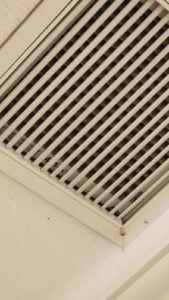
Installation Tips
Installing an air vent deflector is generally a straightforward process that most homeowners can handle themselves. However, it’s essential to follow some tips and best practices to ensure a smooth and effective installation:
Preliminary Steps
- Check Compatibility: Before purchasing, make sure the deflector is compatible with your type of vent—be it floor, wall, or ceiling.
- Measurements: Double-check the measurements of your vents and compare them with the product dimensions to make sure they fit.
- Read Instructions: Most air vent deflectors come with installation instructions. Take a moment to read these thoroughly before starting.
General Installation Tips
For All Types of Vents:
- Clean the Vent: Before installing the deflector, clean the vent and surrounding area to remove any dust or debris. This ensures a more secure fit and better air quality.
- Check for Obstructions: Make sure there are no obstructions like furniture or drapes that might block the deflector once installed.
For Floor Vents:
- Secure Attachment: Floor vent deflectors usually come with clips or rubberized edges for a secure grip. Make sure it is firmly attached so it won’t be easily dislodged by foot traffic or cleaning.
- Test Airflow: After installing, check to see if the air is being directed as you want it to be. Adjust if necessary.
For Wall Vents:
- Leveling: Use a level to make sure the deflector is straight. Some deflectors may come with screws for more secure attachment.
- Check Direction: Make sure the deflector is directing the air in the desired direction, usually away from walls or directly into the living space.
For Ceiling Vents:
- Secure Fastening: Ceiling vent deflectors may require screws or special clips for secure attachment. Make sure it is firmly in place to withstand the force of the downward air.
- Safety First: Use a sturdy ladder and make sure you have someone to assist you, as you’ll be working overhead.
Final Checks
- Airflow Test: Once installed, turn on the HVAC system and check if the deflector is redirecting the air as intended. Make adjustments if needed.
- Check Noise Level: Some deflectors might cause noise when the air flows through them. If this is the case, ensure that it is securely fastened, or consider padding it with noise-dampening materials.
- Regular Maintenance: Keep the deflector clean and dust-free to maintain optimal performance and air quality.
By following these tips, you can ensure a smooth and effective installation of your air vent deflector, maximizing the efficiency and comfort of your HVAC system.
Common Mistakes to Avoid
When installing or using air vent deflectors, there are some common mistakes you’ll want to steer clear of. Paying attention to these potential pitfalls can help you achieve the most effective and safest use of your new HVAC accessory.
Incorrect Sizing
One of the most frequent mistakes is not properly measuring the vent before purchasing a deflector. An incorrectly sized deflector can obstruct airflow or even fall off, causing potential safety hazards. Always double-check the measurements.
Ignoring Material Compatibility
It’s important to select a deflector material that suits your specific needs. For instance, if your home has a high level of humidity, opting for a metal deflector that can rust may not be the best choice.
Inadequate Cleaning
Failure to clean the vent before installing the deflector can result in poor air quality and reduced efficiency. Make sure the vent and surrounding areas are clean and free from debris before installation.
Wrong Deflector Type
Not all deflectors are suitable for every type of vent. Using a deflector designed for a floor vent on a ceiling vent, for example, can lead to ineffective airflow and can be unsafe.
Neglecting Aesthetic Appeal
While it might seem trivial, the visual aspect of a deflector should not be entirely ignored. An aesthetically displeasing deflector can stand out like a sore thumb in a well-decorated room.
Skimping on Quality
Opting for a cheaper, lower-quality deflector might save you money in the short term, but it may not be durable and can break easily. Investing in a high-quality deflector can pay off in the long run.
Overlooking Airflow Direction
Some people install deflectors without considering the best direction for airflow. This can result in uncomfortable drafts or hot and cold spots. Always test the airflow after installation and adjust as needed.
Ignoring Maintenance
Once installed, some people forget to regularly check and clean their deflectors. Dust and debris can accumulate over time, reducing both efficiency and air quality. Regular maintenance is key.
Lack of Safety Precautions
If you’re installing a deflector in a ceiling vent, make sure you take the necessary safety precautions. This includes using a stable ladder and, if possible, having someone assist you to avoid any accidents.
Not Reading Reviews or Seeking Advice
Before making a purchase, always read customer reviews or seek recommendations. This could provide useful insights into the product’s effectiveness, durability, and ease of installation.
Avoiding these common mistakes can ensure that you choose the right air vent deflector for your needs and install it correctly, allowing you to enjoy all the benefits it has to offer.
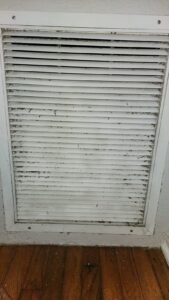
Do air deflectors work on ceiling vents?
Air vent deflectors can work on ceiling vents, but their effectiveness depends on several factors such as the design of the deflector, the airflow patterns in the room, and the specific challenges you’re trying to address.
Advantages:
- Direct Airflow: Ceiling vent deflectors can direct conditioned air away from undesirable locations, like directly over a bed or workspace, thereby reducing drafts and improving comfort.
- Improve Circulation: By directing airflow more efficiently, ceiling vent deflectors can help better distribute temperature throughout the room.
- Compatibility: Many air deflectors designed for ceiling vents come with clips or screw holes for secure attachment, ensuring they stay in place despite the downward force of the air.
Considerations:
- Secure Installation: Because they’re installed overhead, ceiling vent deflectors must be securely fastened to avoid falling and causing injury.
- Potential for Noise: Any obstruction in an airway can create noise. Check reviews or consult experts if noise is a concern for you.
- Aesthetics: Since they’re more visible compared to floor or wall deflectors, consider how the deflector’s design and color fit with your room’s aesthetics.
- Professional Consultation: In buildings with complex HVAC systems, it’s often a good idea to consult a professional before making adjustments to ensure you won’t negatively impact the system’s overall performance.
Air deflectors can be effective on ceiling vents when chosen and installed correctly. They can help manage airflow and improve the comfort and efficiency of a room, but it’s crucial to consider your specific needs and potentially consult a professional for optimal results.
Unlocking HVAC Efficiency: The Final Word on Why Air Vent Deflectors Are Essential
In conclusion, the utility and effectiveness of air vent deflectors can’t be overstated. From enhancing energy efficiency to ensuring a more uniform temperature distribution, these handy devices serve multiple important roles. The seven reasons we’ve explored in this blog illustrate how they can significantly improve your indoor experience, whether in a residential or light commercial setting. They aren’t just optional accessories; in many cases, they are essential components for maximizing the performance of your HVAC system.
Choosing the right air vent deflector can seem like a minor decision, but it’s one with lasting impacts. The wrong choice can result in inefficiencies, while the right one can elevate your comfort to a new level. This is particularly true in climates with extreme temperatures, where your HVAC system has to work overtime to maintain a comfortable indoor environment.
If you’re based in the Tampa Bay area and are considering integrating air vent deflectors into your HVAC system, look no further than The AC Therapist for trusted advice and top-notch service. Our team of professionals not only excels in air conditioning repair, installation, and maintenance, but we also have a wealth of knowledge on how to optimize your HVAC system down to the smallest detail—like choosing the perfect air vent deflector.
Additionally, we offer specialized maintenance plans that can include regular checks to ensure that your air vent deflectors, along with other components of your system, are performing optimally. Whether you’re interested in our Value, Premium, or Elite Therapy Maintenance Plans, we have options to fit your needs and budget.
In short, air vent deflectors are more than just a piece of plastic or metal redirecting air. They are an investment in the overall health and efficiency of your HVAC system, one that could save you money in the long run and make your space significantly more comfortable.
So why settle for less? Make the smart choice and elevate your indoor experience. Reach out to The AC Therapist today, and let’s explore how the right air vent deflectors can make a meaningful, positive difference in your life.

